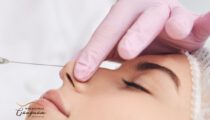Symptoms and treatment of hand skin pigmentation disorders
This article is expertly consulted by “Doctor PHAM THU PHUONG” – Dermatology Department – Mega Gangnam International Plastic Surgery Specialist – Schedule a consultation
Most of us are only interested in how to whiten our facial skin. But few people know that there is an area of skin with similar characteristics that is susceptible to dark spots and wrinkles that needs more attention: the skin of the hands. If you do not take proper care or cover carefully, it is very easy to encounter pigmentation disorders on your hands. This condition will become more dangerous and has the potential to develop into serious syndromes or affect aesthetics. So how is skin pigmentation disorder on the hands treated? Let’s find out below!
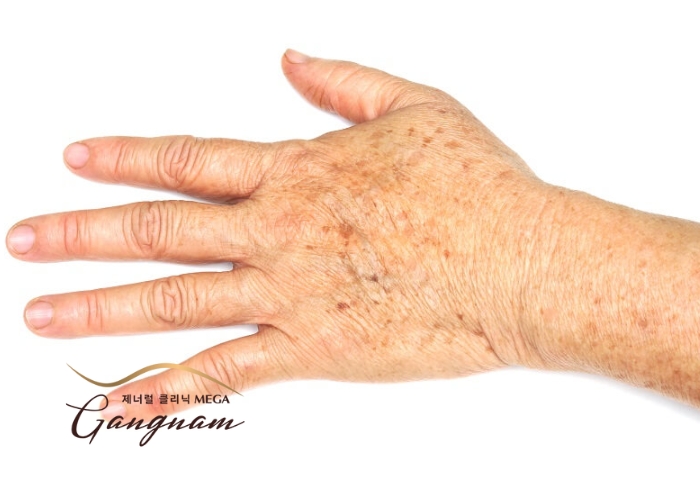
What is pigmentation disorder on the hands?
What is skin pigmentation disorder on the hands?
Pigmentation disorder is a common disease related to the increase or decrease of pigment on the skin surface. Symptoms of the disorder are dark spots or patchy white patches of skin. In this case, they occur on hands that are frequently exposed to sunlight, chemicals and other impurities. In fact, mild pigmentation disorders do not seriously affect our health but can make us feel more self-conscious in communication and daily activities. Regardless, a pair of smooth, white, and evenly colored hands is still something to be proud of.
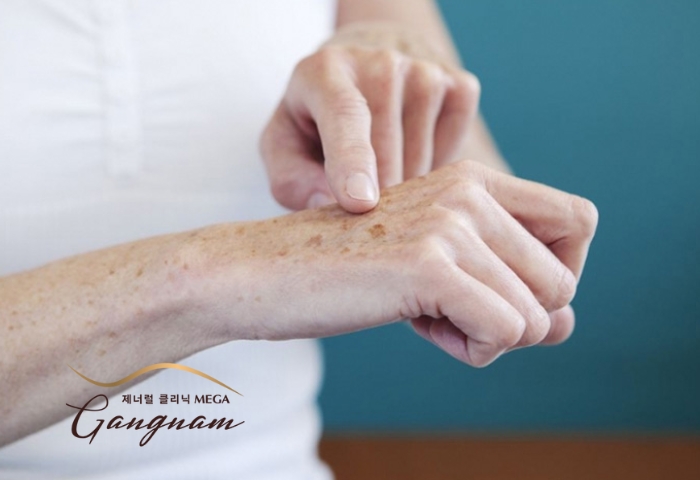
Signs of skin pigmentation disorders on the hands
Pigmentation disorders exist in two most common forms: hyperpigmentation or hypopigmentation with distinct characteristics, as follows:
Hyperpigmentation: The skin appears darker with yellow brown or dark brown spots or patches. Over time, hyperpigmented skin areas gradually expand in area and become more intense. For the skin on the hands, hyperpigmentation is mainly related to the effects of sunlight and too much exposure to chemicals, causing the skin to become thinner and weaker. Melasma and age spots on the arms are also notable signs that require special care.
Hypopigmentation: Different from hyperpigmentation, hypopigmentation creates skin patches that are lighter in color than normal, such as yellowish white. There are even cases of complete loss of skin pigmentation such as vitiligo or vitiligo syndrome. Many people have symptoms of hypopigmentation that not only appears in the hand area but also spreads to the arms and other areas. Treating hypopigmentation is often more difficult than hyperpigmentation.
Causes of hand skin pigmentation disorders
Pigmentation disorders are relatively common, but the direct cause of this phenomenon is different for each person. First you need to confirm whether your hand skin condition is in the hyperpigmentation or hypopigmentation group. Then proceed to the step of confirming the specific cause, which helps find treatment solutions faster and more effectively.
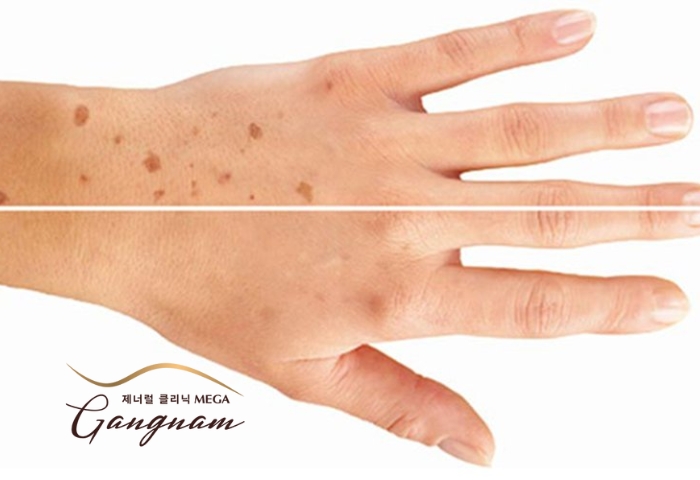
Causes of pigmentation disorders in the hands
For skin hyperpigmentation disorders on the hands
There are many causes for symptoms such as hand skin being darker than normal. This mainly stems from negative external environmental impacts. Genetic syndrome of congenital hyperpigmentation can also occur but the rate is quite low and usually appears on the face. The direct causes that are highly likely to cause hyperpigmentation disorder of the skin on the hands are as follows:
Sunshine: The existence of sunlight brings many benefits to human life and health. However, being exposed to sunlight for too long during times when the light intensity is too high, you will likely face the risk of dark spots, freckles or even skin cancer. Furthermore, many people do not have the habit of applying sunscreen or covering their hands, so the signs of hyperpigmentation are increasing.
Contact with chemicals: In daily life, the use of detergents is extremely common. Although it is not a direct cause, prolonged exposure causes the skin to become worn and thin. This becomes an indirect factor that causes the skin on the hands to be damaged more deeply under the impact of the living environment. To avoid more severe pigmentation disorders, you need to use gloves or other necessary items during chemical contact.
Hormonal disorders in women: Studies show that women have a much higher rate of pigmentation disorders than men. One of the causes of this condition is unstable hormones. Under the influence of environment, diet, rest, psychological problems and special periods, female hormones continuously change. Symptoms such as darkened skin, melasma, freckles, and abnormally colored skin patches are some of the manifestations of hormonal changes.
Age: The older you are, the faster the aging process becomes. Signs such as wrinkled skin, poor elasticity and increased skin pigmentation are the results of the aging process in middle and old age. At this time, the skin is extremely thin and loose, accompanied by dark brown or dark brown spots or patches. If we know how to take care of our skin early, we can slow down the aging process on the body and minimize these manifestations in the hand area.
Post-injury skin hyperpigmentation: In some cases, the skin has dark scars and long-lasting dark scars due to post-inflammatory damage. Skin lesions that are not properly cared for lead to dermatitis and redness
For the phenomenon of skin hypopigmentation disorders on the hands
Unlike the above condition, the decline of pigmentation in the skin of the hands or other areas of the body is largely related to genetic factors. Gene system disorders and thyroid problems cause skin color to change abnormally. Syndromes such as albinism or vitiligo are highly hereditary and often manifest at birth. Using certain chemicals can also cause skin to become depigmented and is extremely dangerous. You also need to be very careful with tinea versicolor and burn scars if you don’t want skin pigmentation to disappear completely.
Can hand dyspigmentation syndrome be treated?
Like any other disease in the body, recovery is determined by the cause of formation, treatment method, patient’s constitution and many other factors. Therefore, without careful examination, it is difficult for us to answer whether you can treat pigmentation disorders or not. However, there is some basis for determining the ability of hand skin to recover after specialized treatment for dyspigmentation syndrome.
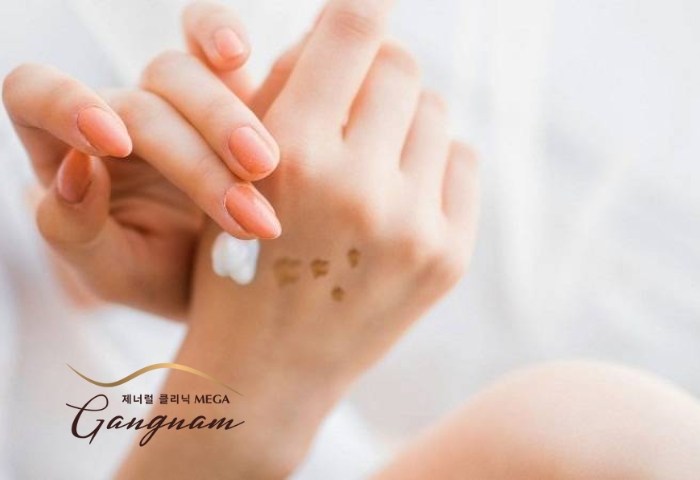
Can skin pigmentation disorders on the hands be treated?
Accordingly, finding methods to treat and restore skin with hyperpigmentation is often higher than with deterioration. Skin hyperpigmentation is mainly due to living environment, climate, sunlight and other factors. Therefore, we can proactively prevent it early to minimize the possibility of long-term development. Treatment is also easier thanks to the results of modern technology. Treatments for melasma, freckles, and age spots can be used to remove excessively hyperpigmented areas of the hands. Such as laser shooting, inhibitor injection or stem cell infusion… Each method has its own advantages, but we encourage you to choose non-invasive treatments to shorten recovery time.
Treatment of hypopigmentation syndromes is often more difficult. Because that means finding a way to naturally activate the pigment synthesis process. Meanwhile, this option is only satisfactory when the skin is mildly depigmented and the damaged skin area is not too large. For those with severe pigmentation disorders such as vitiligo or white scars, complete recovery is impossible. In the case of congenitally depigmented skin such as albinism, modern science has not yet found any satisfactory treatment method. Therefore, the level of pigmentation damage on the skin should be considered to have the most appropriate treatment plan.
Some popular treatments for skin pigmentation disorders on the hands are as follows:
- Chemical peeling method uses special active ingredients to remove the outer layer of skin containing many dead cells. Following your doctor’s instructions will not only help improve pigmentation but also bring about smoother, whiter and softer skin.
- Using some topical medications is also relatively common. These topical creams contain endemic ingredients such as Kojic Acid, Azelaic Acid… The main function is to inhibit excessive melanin synthesis, reducing pigmentation in abnormally dark skin areas.
- Laser treatment of pigmentation disorders: This is an extremely popular method used by many people. The laser firing process sends light beams of appropriate wavelengths to reach and destroy abnormally pigmented cells. This stimulates the body’s self-healing process, helping the skin to heal after the wound is evenly colored and with fewer imperfections.
- High-tech non-invasive treatment methods: Treatment solutions for pigmentation disorders such as stem cell infusion or collagen microimplantation help speed up the self-healing mechanism without the need for surgical intervention. This process helps damaged cells to be restructured comprehensively, quickly and safely. Non-invasive high-tech treatment is suitable for many subjects, including cases of severe hyperpigmentation disorders.
Above is our article to answer questions about skin pigmentation disorders on the hands. Although this is not a dangerous disease, experts encourage early treatment when it appears. That helps limit wrinkles, dark spots and keep the skin smooth. If you have any questions regarding the cause or treatment, please contact Mega Gangnam via Hotline: 093.770.6666 for advice and support today by dermatologists from Korea!







